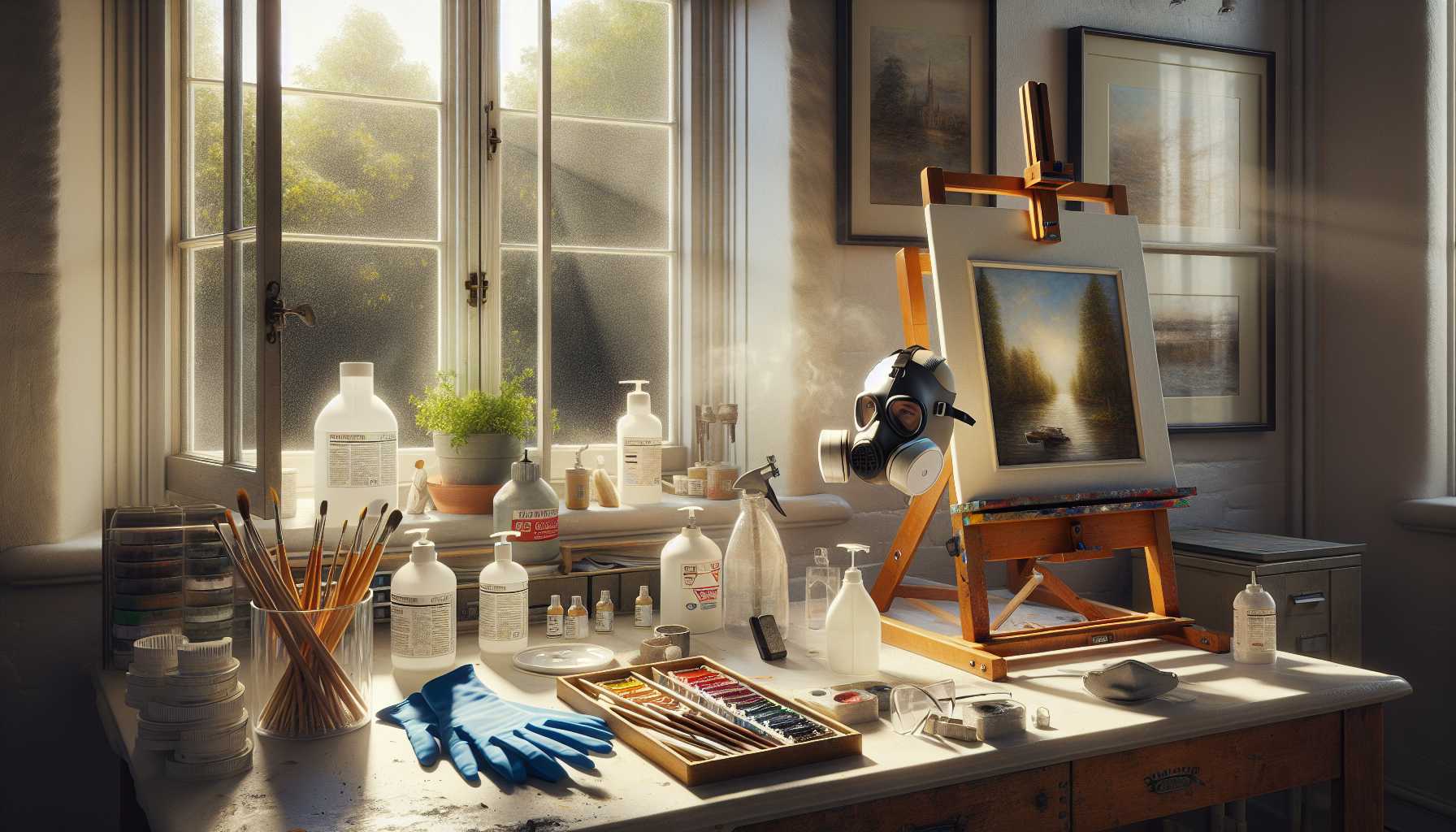Have you ever marveled at the beautiful oil colors you’re working with and wondered about their health implications? Let’s explore the ways you can continue indulging in your artistic passion responsibly, ensuring it remains both a joy and hazard-free undertaking.
The Importance of Adequate Ventilation
Just as you need to inhale and exhale, so too does your creative haven! Proper ventilation serves a purpose greater than merely eliminating unpleasant odors – it’s integral to your health protection. Invite fresh air into your workspace by opening windows, and promote a healthy airflow by setting up a small fan to direct any fumes away from your area.
Organizing Your Workspace
Consider your studio as a sanctuary for your artistry. Maintain its cleanliness and orderliness. Station your easel near a window or any ventilation outlet, and establish a specific area for cleanups and waste management.
Must-Have Safety Gear
It’s time to equip yourself! Here’s what you need for your safety:
– Nitrile gloves (they trump latex!)
– A comfortable respirator mask for those extended painting sessions
– An artist’s apron to shield your clothing
– Safety goggles when you’re stirring or spraying materials
Best Practices for Handling Materials
Give your art materials the respect they deserve! Retain your paints in their original packaging, making sure the labels are legible. Never use your bare hands to combine colors, utilize palette knives instead. Store your solvents responsibly in appropriate vessels, and ensure they’re distant from heat sources.
How to Safely Clean Up
Cleaning up is as crucial as the act of creating! Do not flush oil paint down the sink. Use suitable containers for discarding solvents. Surplus oil paint on paper towels and oily rags belong in metal trash cans with lids.
Getting Familiar with Your Materials
Ignorance isn’t bliss, especially when it comes to safety! Make it a point to meticulously read product labels. Various pigments demand different safety measures. Traditional hues may contain harmful heavy metals, so choose the safer modern alternatives when given the option.
Taking Health Precautions
Your body is your best indicator! If you feel dizzy, develop a headache, make sure to take a break and imbibe some fresh air. Keep your painting activities of reasonable duration, and stay hydrated.
Preparing for Emergencies
Prevention always beats cure! Keep a well-stocked first aid kit within reach.
